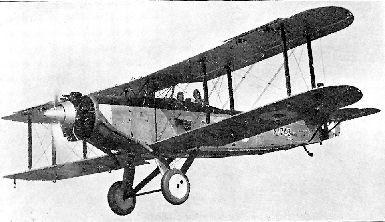Fairey Gordon

The Fairey Gordon carried a pilot in the front open cockpit, with its 100 millimetre high windscreen, and an observer with his Lewis gun in the large open rear compartment. It was an equal span, two bay, braced biplane powered by an uncowled Armstrong Siddley Panther 11A radial Motor of 525 HP. The wingspan was 45’ 5” and the length 34’ 5”. The Gordon was a delightfully uncomplicated machine, lacking such unnecessary bits and pieces as brakes, flaps, electrics and radio. The instruments consisted of airspeed indicator, altimeter, rev. counter, oil pressure gauge, turn and bank and a compass.
Here was an aircraft which you just got into, warmed up the engine, and took off—no need for cockpit drill or any of that nonsense. It performance could best be described as sedate with a top speed of 149mph, cruising speed 120mph, endurance of five hours flying time and a ceiling of 22,000 ft.
Care had to be taken in taking off because if one got the tail too high the twelve foot two bladed fixed pitch metal airscrew had a tendency to mow the grass. With a reasonable wind it was possible to be airborne in the length of two cricket pitches and in the air it was very responsive to the controls and generally behaved in a predictable manner, with the stall delayed by slats in the upper wing. Getting back on the ground required a forced landing technique; that is side slipping in and stalling it on in the three point position because, with only a tail skid, and no brakes, there was no way of stopping the beast.
Murray Adams describes some of his flying experiences in the Fairey Gordon and similar aircraft.